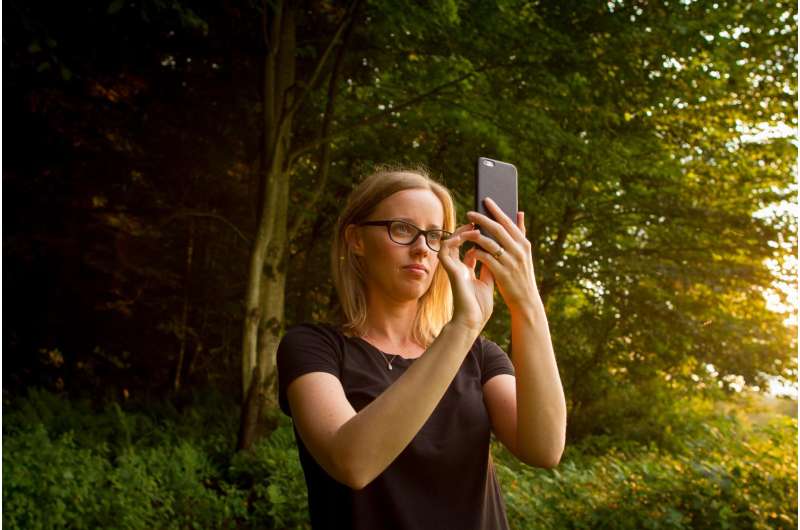University of Vermont researcher Laura Sonter led a team that successfully used social media images --including selfies -- to measure the use and value of outdoor recreation on public lands. The team's study analyzed more than 7,000 geotagged photos on Flickr to calculate that conserved lands contributed $1.8 billion to Vermont's tourism industry between 2007-2014. Credit: Will Watson
A University of Vermont-led team has successfully used social media images to measure the use and value of outdoor recreation on public lands.
The study analyzed more than 7,000 geotagged photos on Flickr to calculate that conserved lands contributed $1.8 billion to Vermont's tourism industry between 2007-2014.
The research is the first to measure of the value of outdoor recreation in Vermont public parks and other conserved lands during these years. The findings were published September 9 in the journal PLOS ONE.
"Historically, it's been difficult for states and municipalities to assess the value protected lands for outdoor recreation," says UVM researcher Laura Sonter. "Many areas only staff entrance booths in the summer. Others gather no data, or rely on surveys, which are time-consuming and expensive to collect."
Social media can be used to explain why some protected lands get more use than others, the findings suggest. Analyzing photo locations, the researchers identified eight key factors that drive the use of conserved lands, including forest cover, trail density, and opportunities for snow sports. These factors can inform investment decisions, researchers say.
The study found key differences between outdoor enthusiasts from Vermont and out-of-state. For example, forest loss significantly reduced the number of Vermonters visiting conserved lands, but had less of an effect on out-of-state tourists, who preferred locations with easy access to clean water and swimming.
"These findings show that protected lands' contributions to our economy are more than previously known," says Sonter, a postdoctoral research at UVM's Gund Institute and Rubenstein School of Environment and Natural Resources. "More importantly, this research outlines landscape features that decision-makers can potentially invest in to enhance tourism and outdoor recreation in Vermont."
Journal information: PLoS ONE
Provided by University of Vermont




















